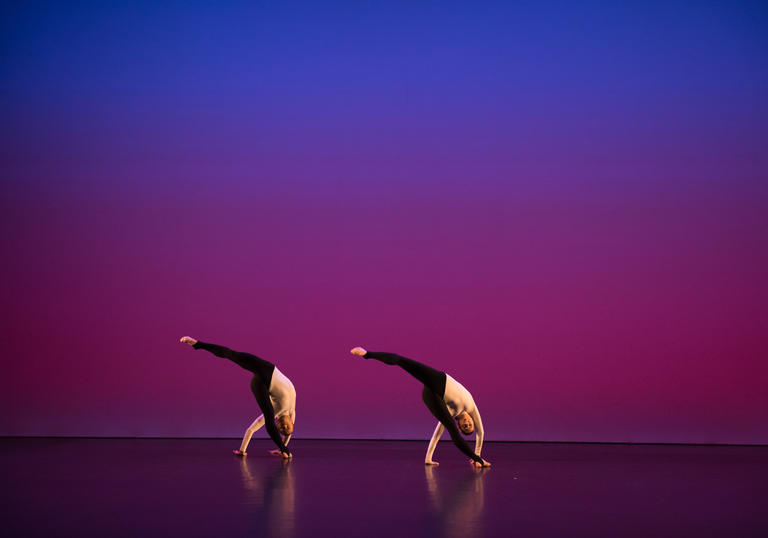Take Satie, Patti and Bowie and add Michael Clark and a revelation becomes apparent; well, such unexpected revelation has always been Clark’s skill and talent. Who other than Clark would think to – no, would know to put these together, find a natural choreography between them, in a gestural contextualising of the music that’s contextualised a century? Through Clark’s work, time, and particularly our time, the time gone into making us, always becomes not just clear but readable in a new way.
Here are a few of the words journalists have typically used to describe Clark and his work over the years: wild child, bare-arsed!, cult, perfectionist, reputation, quixotic, beauty, homage; I’d add the word renaissance, because whatever he touches brings things to a versatile rebirth. The film director Peter Greenaway knew instinctually to cast Clark as the airiest Caliban ever in his 1991 version of The Tempest. to a simple, rock ‘n’ roll . . . song. is an Ariel/Caliban combo at full power, renaissance duality come of age.
Without saying a word, it says everything
Clark’s initial dialogue with Satie pushes the dancer-body to extremes that allow words like extreme and subtle to be lovers, foregrounding poise, patience and strength in an interaction of elegy and energy, a study of how the human frame moves into and out of integration and concentration, a play on how we come together and come apart. But the coming together of Clark and Satie produces a work simply and beautifully about something opening, like a plant opening to light, and in its celebration of inner and outer gestural states it opens us. Disciplined in the extreme and all the subtler for it, it becomes calligraphic, an ancient language, mysteriously sensitised in time – strangely as if this music already knew Clark, was written specifically to take this shape, poetic and symbolic, grave in its humanness, gravely moving, deeply serious in its exhilaration. Without saying a word, it says everything; the play of ritual in it feels so fresh and contemporary it couldn’t be about anything but now, and simultaneously it gives our nowness a centuries-wise dimension.
Then this flung-openness meets the force of Patti Smith’s ‘Land’ and something explosive happens, the century’s pulse quickens, the workings of desire meet the force of thought, capricious and disciplined both, and it all adds up to a mathematics of desire as the design of life itself, the number combination of an electric creativity. But it’s in Clark’s final dialogue, with old/new Bowie, that we really get to the core of the magnetism between creativity, mystery and elegy, the poles that fix us by gravity to the earth and the lifeforce that flings us up, makes starmen, starwomen of us, makes the constellations bend back towards the earth.
A sheer anarchic momentary rite of joy
As the night’s three works fuse together the piece shifts from uncompromised mourning to an expansiveness, a gesture against the odds, open possibility up against the dark, an end that makes you want things never to end, a sheer anarchic momentary rite of joy.
So this is what the body’s been for, all along, then, this giving of the whole self, this commitment – commitment off the scale.
Dark to light, stark to full spectrum; how does he do it?
Mining this radical openness out of the darkest landscapes all his dancing life: only Michael Clark.

